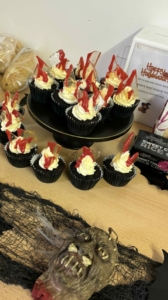A few years ago, we explored the NHS backlog, and its underlying causes. We also assessed the NHS targets for clearing these backlogs, and discussed the impacts they were having on ambulance waiting times.
In this post we’ll take a closer look at the current state of A&E waiting times in the UK, and how they compare to pre-pandemic levels.
All of the figures and trends we refer to in this post come from this Office for National Statistics report.
A&E Waiting Times Vary Across the UK
Across the UK home countries, you will find slightly different policies on how A&E wait time data is collected. It’s possible to make broad comparisons between A&E wait times between England, Scotland, and Wales. However, Northern Ireland’s healthcare data collection policy differs so much as to make comparisons more difficult.
But that said, we can compare data on the overall number of A&E attendances across all four countries.
NHS Targets for A&E Waiting Times
Every country in the UK aims for a four hour standard for A&E visits. The general aim is that at least 95% of attendances will be admitted, transferred, or discharged within four hours of arriving at A&E.
Following the pandemic, the NHS was under considerable pressure as services struggled to deal with patient backlogs. So, in December 2022, NHS England implemented a new temporary standard, whereby they would aim to see at least 76% of A&E attendances within four hours. NHS England returned to the 95% four hour standard in March 2024.
What is the 12 Hour Waiting Time Standard?
In addition to this four hour standard, Wales and Northern Ireland have a 12 hour standard. The aim here is that no patient should have to wait longer than 12 hours in any type of A&E department.
Average A&E Waiting Times Are Getting Longer
Across the UK, between 2013 and 2023, there has been an overall rise in the monthly percentage of A&E attendances waiting longer than four hours. Patients in England have seen the biggest rise in A&E waiting times. In January 2013, 8.1% of attendances waited longer than four hours. By September 2023, this figure had risen to 42.4%.
December 2022 saw a peak in A&E waiting times across England, Scotland, and Wales. In this one month, 50.4% of English patients, 41.7% of Scottish patients, and 45.8% of Welsh patients had to wait longer than four hours to be seen.
A&E wait times dropped significantly during the early months of the pandemic. Lockdown restrictions meant that fewer people overall attended A&E departments. While this contributed to a drop in A&E wait times, it would later result in a huge backlog of care. This is partially why wait times rose significantly in the years following the pandemic.
Why Are A&E Wait Times Getting Longer?
Beyond the post-pandemic backlog of care, there are other explanations for the rise in A&E wait times across all four UK countries.
These include:
- Population Changes – As populations have grown, so too have the proportion of A&E attendances per 1,000 population. A growing population may also be associated with a growth in rates of disability, or long-term illnesses, that might necessitate an A&E visit.
- Aging Populations – A higher proportion of elderly people in a population means a higher proportion of the age-related injuries and illnesses.
- Ease of Access – In some parts of the country, people may struggle to access certain healthcare services. For example, the lack of healthcare provisions in rural areas might increase A&E attendance rates in nearby towns and cities.
- Policy Changes – We have already explored how lockdown policies might have influenced A&E wait times. In addition to this, governments across the UK have imposed other policies that may have impacted A&E wait times, such as Scotland’s efforts to discourage unplanned attendances.
How to Find A&E Waiting Times Near Me
If you want to find out how long you might have to wait to get seen at healthcare providers in your area, use this NHS Tracker resource on the BBC’s website.
Enter your postcode and it will give you an idea of:
- Ambulance waiting times
- A&E waiting times
- Treatment waiting times
Support For NHS Healthcare Providers
At Cairn Technology, we specialise in improving quality and efficiency in healthcare settings.
While we cannot help you address long waiting lists in your A&E department, we can help you to improve staff safety and well-being while reducing turnaround times between certain procedures.
We can also help you improve the waiting rooms across your healthcare premises. From air purifiers to advanced cleaning solutions, we offer a range of products and services that will help you make your waiting room safer, cleaner and more welcoming for both staff and patients.
For a friendly chat about how we can help you, get in touch to talk to one of our experts today.


 Cairn Technology to a fundraising total of over £3,800 since starting to donate in November 2021.
Cairn Technology to a fundraising total of over £3,800 since starting to donate in November 2021.